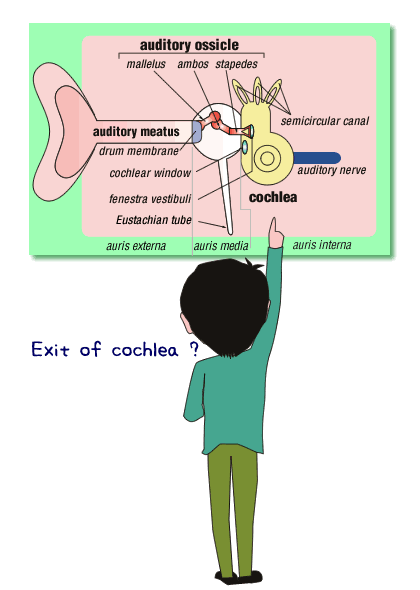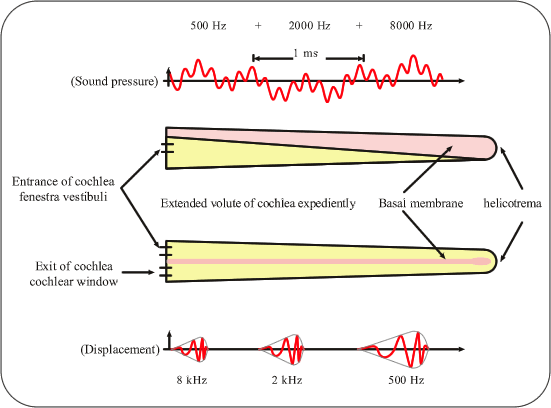- HOME
- Ono Sokki's Patio
- Spectral masking 1

Spectral masking 1
Ken: You told me the other day about the sound mask-something, didn’t you? I got on a metro today and heard an in-car announcement clearly while it is running on the ground but it became difficult to hear while going under the ground. I guess this is the mask-something phenomenon as you said.
Dad: Yes. Let me talk about masking more details today. It may be a bit difficult for you to understand. Because the level of noise in a train became high after it went under the ground, the announcement became unheard. This is called masking phenomenon, too. This is largely related to the structure of human ear and there are two characteristics. There are various kinds of sound tones around us from low to high. One of the characteristics is a masking phenomenon which relates to frequency, or sound tone. If there are two kinds of sound, a certain-tone-sound and a little bit lower-tone-sound, it is hard to hear the higher-tone-sound due to the lower-tone sound. Once the difference of the two tones (= frequency) becomes larger, you can get to hear both sounds well again, which may be depending on the sound level.
Ken: What kinds of relations are there between what you told me now and the structure of human ear?
Dad: I
think you were roughly taught the structure of ear in
science class. Once a sound enter into a hole of an ear
(called “auditory meatus”), it makes the dram membrane
vibrate. The vibration is conveyed to the three little bones
in “auris media” and then to a bone called “cochlear”, which
looks like a snail. Around the cochlear and the deeper parts
are called “Auris interna”, which is filled with lymph fluid
and it is connected to the exit of cochlear with a membrane
which is called “basal lamina “ (Chart 1).

Ken: Where does the exit of cochlear lead to?
Dad: I
said “exit”, however, this is not an exit but it is sealed
actually. So once the vibration comes into the entrance of
the cochlear, it is absorbed by shaking basal membrane
mediated by lymph fluid. High-tone sound shakes near the
entrance of cochlear of basal lamina and the low-tone does
the deeper parts.
Ken: Is there a relation between how to shake the membrane and vanish of the high-tone sound due to the low-tone sound?
Dad: You got a good point. As you said, the vibration of the membrane has something to do with the sound masking. When a sound enters into an ear, the range of vibration becomes bigger as it goes deeper and the vibration gets a little suddenly right after becoming maximum vibration. It is shaken by the high-tone sound near the entrance, as I said, so if there are two sounds which have closer tones to each other, the higher is masked as the vibrations remains. There is a hair cell in basal membrane and when the cell gets stimulated by the vibration of the membrane, stimulus is conveyed to the brain via nerve fiber and finally a sound is identified by acoustic-sense (Chart 2).
 Chart
2
Chart
2
Ken: I see. There are a lot of processes after a sound comes into ears. It is a bit difficult for me but I understand that masking relates to the structure of an ear. By the way, what is the other characteristic?
Dad: What I told now is frequency masking as this is caused by the tone of sound. The other is called “temporal masking” and it is caused when there is a time lag between two sounds. I will tell you later.
- © Copyright. ONO SOKKI CO., LTD. All Rights Reserved.
